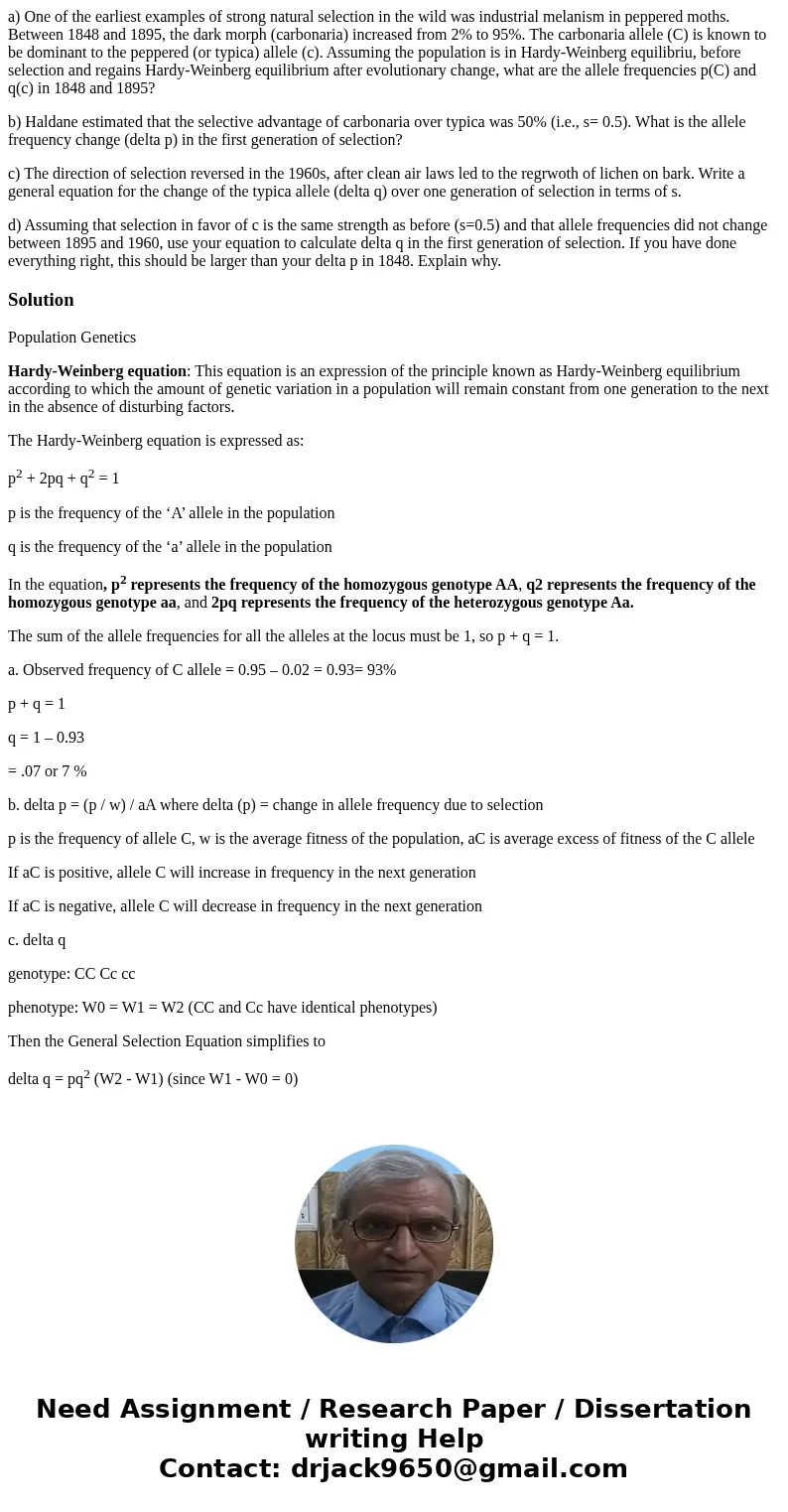a One of the earliest examples of strong natural selection i
a) One of the earliest examples of strong natural selection in the wild was industrial melanism in peppered moths. Between 1848 and 1895, the dark morph (carbonaria) increased from 2% to 95%. The carbonaria allele (C) is known to be dominant to the peppered (or typica) allele (c). Assuming the population is in Hardy-Weinberg equilibriu, before selection and regains Hardy-Weinberg equilibrium after evolutionary change, what are the allele frequencies p(C) and q(c) in 1848 and 1895?
b) Haldane estimated that the selective advantage of carbonaria over typica was 50% (i.e., s= 0.5). What is the allele frequency change (delta p) in the first generation of selection?
c) The direction of selection reversed in the 1960s, after clean air laws led to the regrwoth of lichen on bark. Write a general equation for the change of the typica allele (delta q) over one generation of selection in terms of s.
d) Assuming that selection in favor of c is the same strength as before (s=0.5) and that allele frequencies did not change between 1895 and 1960, use your equation to calculate delta q in the first generation of selection. If you have done everything right, this should be larger than your delta p in 1848. Explain why.
Solution
Population Genetics
Hardy-Weinberg equation: This equation is an expression of the principle known as Hardy-Weinberg equilibrium according to which the amount of genetic variation in a population will remain constant from one generation to the next in the absence of disturbing factors.
The Hardy-Weinberg equation is expressed as:
p2 + 2pq + q2 = 1
p is the frequency of the ‘A’ allele in the population
q is the frequency of the ‘a’ allele in the population
In the equation, p2 represents the frequency of the homozygous genotype AA, q2 represents the frequency of the homozygous genotype aa, and 2pq represents the frequency of the heterozygous genotype Aa.
The sum of the allele frequencies for all the alleles at the locus must be 1, so p + q = 1.
a. Observed frequency of C allele = 0.95 – 0.02 = 0.93= 93%
p + q = 1
q = 1 – 0.93
= .07 or 7 %
b. delta p = (p / w) / aA where delta (p) = change in allele frequency due to selection
p is the frequency of allele C, w is the average fitness of the population, aC is average excess of fitness of the C allele
If aC is positive, allele C will increase in frequency in the next generation
If aC is negative, allele C will decrease in frequency in the next generation
c. delta q
genotype: CC Cc cc
phenotype: W0 = W1 = W2 (CC and Cc have identical phenotypes)
Then the General Selection Equation simplifies to
delta q = pq2 (W2 - W1) (since W1 - W0 = 0)

 Homework Sourse
Homework Sourse